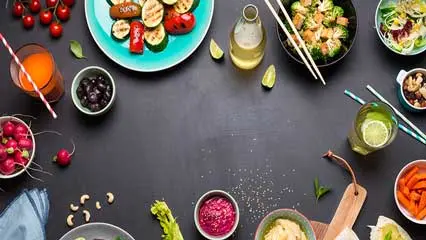Global Fortified Rice Market is projected to be worth 37.42 billion by 2034 and is anticipated to surge at a CAGR of 5.86%.
Fortified rice is rice enhanced with essential micronutrients like iron, vitamins, and minerals to address nutritional deficiencies. It helps combat malnutrition, especially in regions where access to diverse diets is limited. By incorporating nutrients directly into rice, a staple food, fortified rice offers a cost-effective, convenient way to improve public health. It supports better immune function, reduces anemia, and promotes overall well-being, making it vital in developing countries and food aid programs.
Drivers:
The fortified rice market is driven by government initiatives and collaborations with international organizations focused on combating malnutrition and improving food security. It provides a convenient, cost-effective solution for nutrient deficiencies, especially in regions with limited access to diverse diets. Rising consumer demand for healthier foods and fortified products further fuels growth. Manufacturers innovate to maintain taste and texture while enhancing nutrition, supported by technological advances that preserve nutrient levels during processing. Increasing R&D investments aim to develop fortified rice variants tailored to specific needs. Growing health awareness and preventive care also boost demand, creating strong opportunities for market expansion worldwide.
Challenges:
The global fortified rice market faces several challenges that could hinder its growth. One major issue is the high cost and complexity of fortification technologies, which can limit adoption, especially in low-income regions. Ensuring the uniform distribution and stability of nutrients during processing and storage remains difficult, affecting product quality and efficacy. Additionally, consumer awareness and acceptance can be low due to taste concerns or lack of education about fortified foods. Regulatory variations across countries and the need for stringent quality control further complicate market expansion. Lastly, supply chain constraints and competition from alternative nutrition interventions pose ongoing obstacles for the fortified rice market globally.
Market Trends:
The fortified rice industry has grown significantly due to rising awareness of malnutrition and essential nutrient needs. With a growing global population and shifting diets, demand for fortified foods like rice is increasing, especially in developing countries with limited access to diverse diets. Governments and international organizations promote fortified rice to combat malnutrition, supported by advancements in processing technology. Adoption by manufacturers and feeding programs boosts market growth, while consumer interest in healthier options and preventive care drives demand in both developed and emerging markets, ensuring continued expansion and innovation opportunities.
Global Market Key Players:
Amoli International, Daawat, Hexagon Nutrition Ltd., Nutriso, Oliria, Radiance Global, Relishum Foods, Sarwa Food, Zippy Edibles.
Global Fortified Rice Market Segmentation:
By Type of Rice Kernels: Based on the Type of Rice Kernels, Global Fortified Rice Market is segmented as; Iron-fortified rice, Zinc-fortified rice, Vitamin A-fortified rice, Multiple micronutrient fortified rice
By Processing Method: Based on the Processing Method, Global Fortified Rice Market is segmented as; Hot or warm extrusion, Dusting, Coating
By Distribution Channel,: Based on the Distribution Channel, Global Fortified Rice Market is segmented as; B2B, B2C.
By Region: This research also includes data for North America, Latin America, Asia-Pacific, Europe and Middle East & Africa.
This study also encompasses various drivers and restraining factors of this market for the forecast period. Various growth opportunities are also discussed in the report.





































